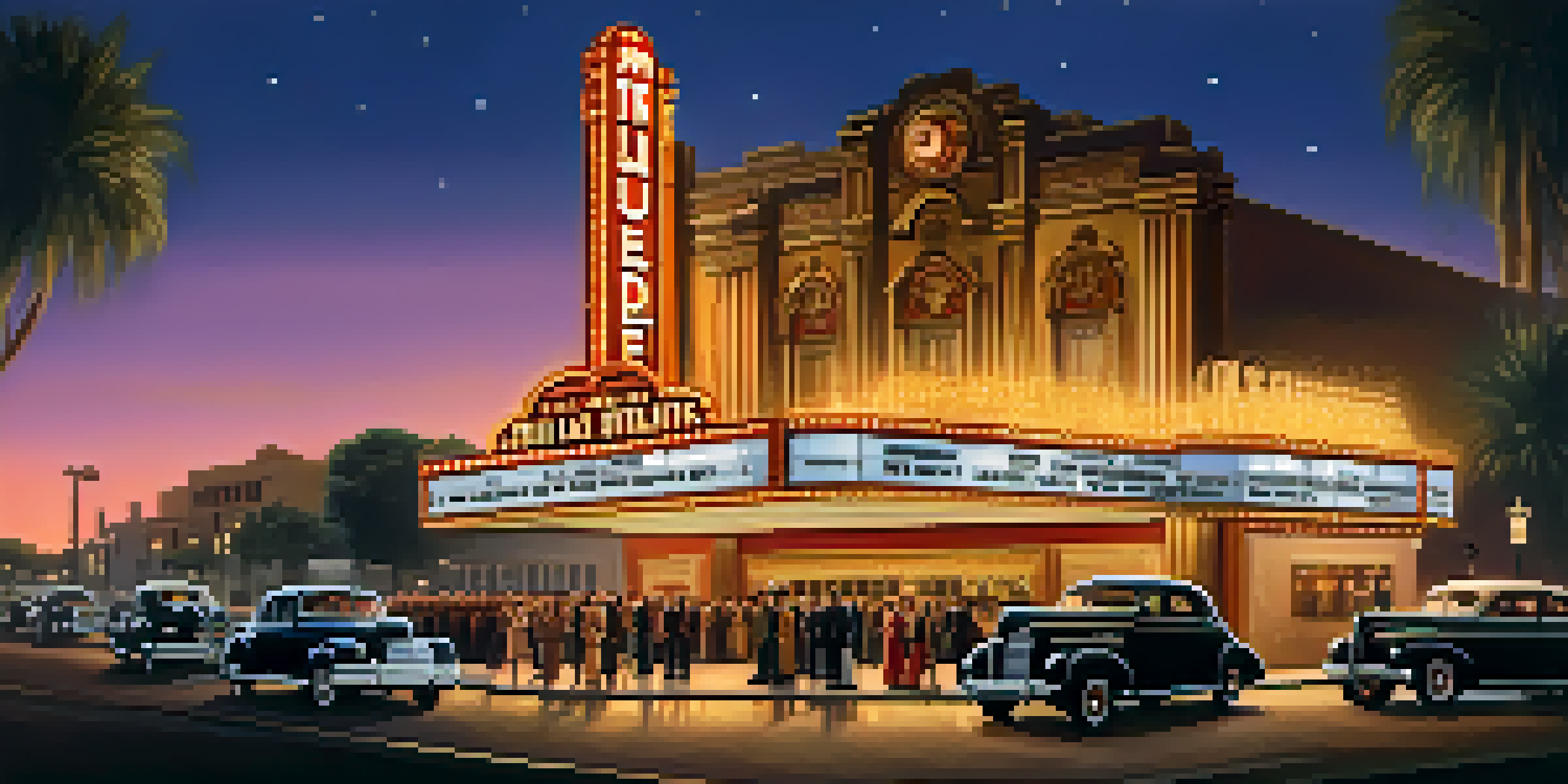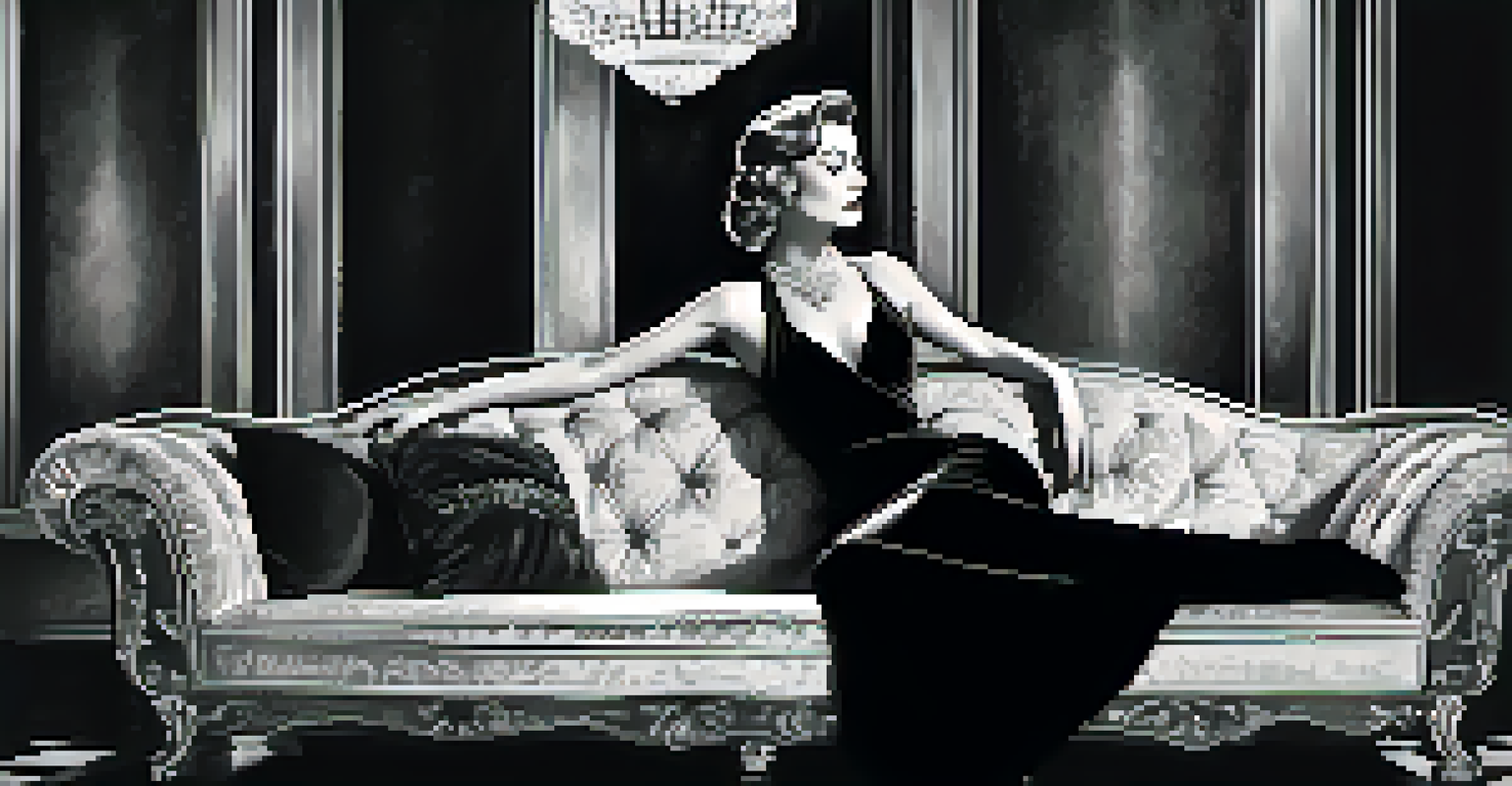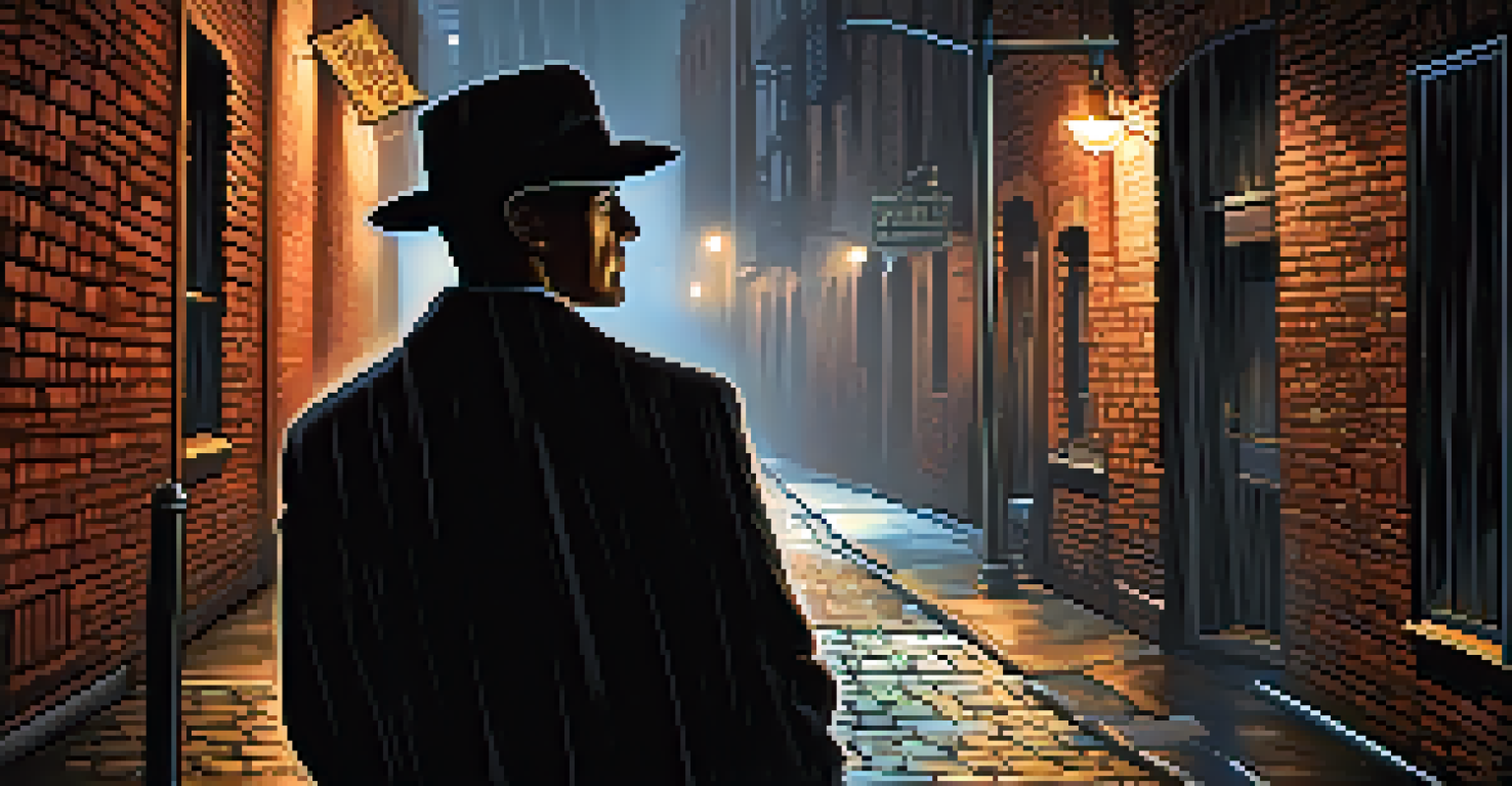The Golden Age of Hollywood: A Retrospective on Classic Films

Defining the Golden Age of Hollywood
The Golden Age of Hollywood typically spans from the late 1920s to the early 1960s, a time when the film industry flourished. It was characterized by the rise of studio systems, where major studios controlled all aspects of film production and distribution. This era produced some of the most beloved films and legendary stars, shaping the landscape of cinema as we know it today. Think of it as the birth of the blockbuster, where films like 'Gone with the Wind' and 'Casablanca' became cultural phenomena.
Cinema is a matter of what's in the frame and what's out.
During this period, the introduction of sound in films, known as the 'talkies', revolutionized the industry. Before this, silent films relied heavily on visuals and music to tell their stories, but once dialogue was added, a new layer of storytelling emerged. This transition not only changed how films were made but also how audiences experienced them, leading to a deeper emotional connection with characters. It’s a bit like switching from reading a book to listening to an audiobook—both are great, but the latter adds a whole new dimension.
Moreover, this era marked the emergence of iconic genres like film noir, musicals, and epic dramas. Each genre brought unique storytelling techniques and visual styles, captivating audiences and influencing future filmmakers. The Golden Age truly set the stage for what movies could become, making it a pivotal moment in cinematic history.
Iconic Stars of the Golden Age
The Golden Age of Hollywood introduced audiences to some of the most iconic stars in film history. Names like Humphrey Bogart, Marilyn Monroe, and Audrey Hepburn became synonymous with glamour and talent, enchanting viewers with their performances. These stars were not just actors; they were symbols of an era, embodying the dreams and aspirations of the time. Their charisma and screen presence made them household names, and their films continue to be cherished today.

Actors and actresses during this time often had carefully crafted images, influenced by the studios that managed their careers. This meant they were often typecast in specific roles, such as Bogart’s tough-guy persona or Monroe’s seductive charm. However, this also led to memorable performances that fans still celebrate. Imagine walking into a room and instantly recognizing someone by their signature style; that’s how these stars left an indelible mark on cinema.
Hollywood's Golden Age Overview
The Golden Age of Hollywood, from the late 1920s to the early 1960s, marked a flourishing era of film characterized by the rise of studio systems and iconic cinematic storytelling.
In addition to acting, many stars became involved in production, paving the way for future generations of artists. For instance, the legendary Bette Davis not only starred in films but also fought for creative control behind the scenes. This blend of talent and ambition not only shaped their careers but also influenced the industry, encouraging a more collaborative approach to filmmaking.
Influential Directors of the Era
The visionaries behind the camera played a crucial role in shaping the films of the Golden Age. Directors like Alfred Hitchcock, Frank Capra, and John Ford brought unique storytelling techniques and styles to the forefront, creating films that resonate with audiences to this day. Hitchcock’s mastery of suspense in movies like 'Psycho' transformed how thrillers were made, turning the genre into a staple of American cinema. Picture a magician revealing a trick; Hitchcock did just that with suspense, leaving audiences both amazed and terrified.
The greatest thing about movies is that they can take you to places you’ve never been, make you feel things you never thought possible, and show you the world through someone else’s eyes.
Each director had their own flair, often reflecting the cultural and social issues of the time through their work. Capra’s films often highlighted the importance of community and resilience, while Ford’s westerns showcased the American spirit. These themes not only entertained but also sparked conversations about society, making films a mirror to the world. Think of these directors as composers, crafting symphonies that echoed the hopes and dreams of a generation.
Furthermore, many directors took risks with their storytelling, pushing boundaries and experimenting with new techniques. This willingness to innovate helped pave the way for modern filmmaking, showing that cinema is an evolving art form. Directors like these didn’t just create films; they created legacies that continue to inspire filmmakers around the globe.
Cinematic Techniques That Transformed Storytelling
The Golden Age saw the introduction and refinement of various cinematic techniques that have become staples in filmmaking today. Techniques such as deep focus, montage, and innovative lighting transformed how stories were told on screen. For instance, deep focus allowed viewers to see multiple layers of a scene simultaneously, creating a more immersive experience. Imagine staring into a painting where every detail pops out; that’s the beauty of deep focus in film.
Additionally, the use of montage—editing together a series of shots to convey a message or emotion—allowed filmmakers to tell complex stories efficiently. This technique became particularly popular in films like 'Battleship Potemkin', where quick cuts heightened the sense of urgency and drama. It’s similar to flipping through a photo album; each image tells a piece of the story, and together they create a narrative.
Influential Stars and Directors
This period introduced legendary stars like Marilyn Monroe and directors like Alfred Hitchcock, who shaped the film industry with memorable performances and innovative storytelling techniques.
Lighting also played a pivotal role in shaping the mood and tone of films during this era. Directors and cinematographers used lighting not only to illuminate scenes but also to evoke emotions. For instance, the use of shadows in film noir created a sense of mystery and danger, drawing audiences into the story. These techniques demonstrated that filmmaking is as much about visual artistry as it is about storytelling.
The Impact of the Studio System
The studio system dominated Hollywood during the Golden Age, controlling nearly every aspect of film production. Major studios like MGM, Warner Bros., and Paramount had exclusive contracts with actors, directors, and writers, ensuring a consistent output of films. This system allowed studios to produce a staggering number of movies each year, creating a sense of abundance in cinematic offerings. It’s like a well-oiled machine, churning out hits that captivated audiences week after week.
While the studio system led to the creation of iconic films, it also had its drawbacks. The pressure to produce films on a tight schedule often stifled creativity, leading to formulaic storytelling. Actors were frequently typecast, limiting their opportunities to explore diverse roles. Imagine being stuck in the same job for years; that’s how many stars felt during this era, despite their immense talent.
The studio system began to decline in the late 1950s, paving the way for independent filmmaking and new voices in cinema. This shift allowed for more creative freedom and diverse storytelling, but the legacy of the studio system still influences Hollywood today. The balance between studio control and artistic expression remains a critical conversation in the film industry.
Cultural Reflections in Classic Films
Classic films from the Golden Age often reflect the cultural and societal values of their time. Movies like 'The Wizard of Oz' and 'It's a Wonderful Life' encapsulated themes of hope and resilience, resonating deeply with audiences who faced economic hardships during the Great Depression. These films served as a form of escapism, allowing viewers to dream and believe in a brighter future. It’s like finding a favorite old book that brings comfort during tough times.
Moreover, films like 'Guess Who's Coming to Dinner' tackled social issues, addressing topics like race and equality at a time when such conversations were often taboo. By bringing these issues to the forefront, filmmakers sparked important dialogues that challenged societal norms. Think of these films as social mirrors, reflecting the struggles and triumphs of society while encouraging audiences to think critically.
Cultural Impact of Classic Films
Classic films from the Golden Age not only entertained audiences but also reflected and influenced societal values, sparking important conversations about cultural issues.
As we look back at these classic films, we can see how they not only entertained but also influenced cultural shifts. They provided a platform for discussion and change, demonstrating the power of cinema as a tool for social reflection. The legacy of these films continues to inspire filmmakers who seek to tell meaningful stories that resonate with contemporary audiences.
Legacy of the Golden Age in Modern Cinema
The Golden Age of Hollywood left an indelible mark on modern cinema, shaping how films are created and experienced today. Many contemporary filmmakers draw inspiration from the storytelling techniques, genres, and themes established during this era. For example, the resurgence of musicals in films like 'La La Land' pays homage to the enchanting musical productions of the past. It’s like a nostalgic nod to a beloved family tradition that brings joy to new generations.
Further, the iconic characters and stories from the Golden Age continue to influence popular culture. Remakes of classics and references in modern films demonstrate the lasting impact of these stories on audiences. Characters like James Bond or Dorothy Gale remain embedded in our cultural consciousness, showcasing the timelessness of great storytelling. Just like a classic recipe, these narratives are revisited and reimagined, keeping the essence alive.

As we celebrate the legacy of the Golden Age, it’s essential to recognize how it laid the groundwork for the diverse and innovative films we enjoy today. The evolution of technology and storytelling continues to build on the foundation set by these classic films, ensuring that their influence endures. Ultimately, the Golden Age is not just a chapter in film history; it’s a vital part of the ongoing story of cinema.